Christmas music comes in many flavors, from traditional carols like “Joy to the World” and “Silent Night”, to secular pop songs like “Have Yourself a Merry Little Christmas” and “Jingle Bell Rock”, to novelty songs like “Grandma Got Run Over By a Reindeer” and “You’re a Mean One, Mr. Grinch”. And then there’s Mannheim Steamroller, which for the last 30 years has brought an instantly recognizable modern synthesizer-driven spin on traditional Christmas songs and beyond.
The mastermind of Mannheim Steamroller is Chip Davis, who got his start writing music for C.W. McCall of “Convoy” fame, then struck gold with Mannheim Steamroller’s Fresh Aire albums before striking platinum in the Christmas realm. To date, Mannheim Steamroller has sold over 40 million albums, and is the top Christmas music artist of all time.
This interview was for a preview article for noozhawk.com for the Mannheim Steamroller Christmas concert at the Granada Theatre in Santa Barbara, CA on 12/29/16. It was done by phone on 12/20/16. (Scott Dobry photo)
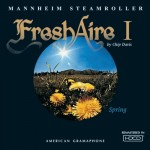
Jeff Moehlis: The first Mannheim Steamroller album, Fresh Aire, is just over 40 years old. How did you see that album fitting in relation to the musical landscape of that time?
Chip Davis: When I wrote that album, I thought I was writing a pop album, and much to my surprise found out that I wasn’t. The album took off sales-wise actually in hi-fi stores, instead of regular, traditional retail. The hi-fi stores were selling high-end turntables, speakers, high-end cartridges, and all that. So the album was being used to demonstrate high-end audio. The first place it was at was as a demonstration record that the hi-fi guys were buying. But then people would come in and say, “Hey, I love that turntable or speaker, but what’s that thing you’re playing on it?” And the guy is like, “Well, it’s Fresh Aire, it’s this group Mannheim Steamroller.” Then, what happened is the hi-fi stores started stocking the albums so that they could sell it with the turntables, because people wanted to buy it.
Eventually by Fresh Aire II, which was several years later, it started working its way into traditional retail. Best Buy I don’t think was around then, but Target certainly was. So it got into the big stores then at some point in time, and at one point when the Christmas album came in ’84, which was ten years later, that whole thing just rocketed. The head buyer at Target bought a lot of them, and it created quite a stir in the whole record business.
JM: Were you influenced at all by progressive rock, like, say, Rick Wakeman?
CD: More like Emerson, Lake & Palmer.
JM: Another possible influence that came to my mind was Walter Carlos, later Wendy Carlos.
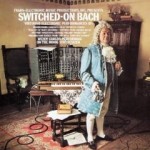
CD: Oh yeah. Switched-On Bach was a really big-time favorite of mine, and really opened my eyes to the possibilities with synthesizers and things.
JM: You mentioned that your first Christmas album came out in 1984. What inspired you to do that, to do a Christmas album?
CD: You know, I just liked Christmas music. I wasn’t doing any Fresh Aire albums at that point. It was in between albums. I usually let myself have a few years between Fresh Aire albums so that you weren’t stepping on your own sales in retail. So I thought, “Maybe I’ll do a Christmas album, because I really like Christmas music.”
I have a lot of Renaissance Christmas albums. Christmas really got started musically by a guy called Johann Hermann Schein in North Germany. I started listening to some of the pieces that they were doing, and in fact one of the pieces he wrote is on one of the Christmas albums [“Gagliarda”, first appeared on Mannheim Steamroller’s Christmas in the Aire], and we play it at the concerts also. So I got enthralled with Christmas music because of the Renaissance spin on it.
As you can hear, the first Christmas album gathers songs like “Deck the Halls”, which is a real techno sort of thing for its time, but there are four cuts on there that are pure Renaissance. I played all of the instruments myself. I was a bassoon major at Michigan, and so I played all of the instruments myself, whether it was the tambourine/percussion instruments, or recorders, or the crumhorn, or any of the ancient double reed instruments.
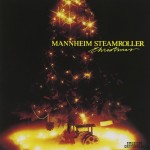
JM: Did you have any inkling that the first Christmas album would be so popular?
CD: No, actually. I was discouraged by a lot of the retailers at the time to do a Christmas album. They said, “An artist usually does a Christmas album if they’re running out of ideas. Or they’re fulfilling a commitment with a label and they want to get off that label, so they write a Christmas album. They’re saving up their good stuff.” Yeah, I was kind of discouraged, but I’ve never let that bother me in the past, and I didn’t let it then. That album went on to sell nine million copies, and I think everyone thought it was OK after all.
JM: Had you known that it would sell so many copies, would you have done anything differently?
CD: Probably not. You know, I think it was some of the innocence of having the Renaissance music on there… I wouldn’t have tried to go more pop or more rock, or anything like that. I think that the balance of it turned out just fine. I don’t imagine doing something different. When I’ve done further albums with Christmas, I’ve sort of used that as a basic template. So I’ve done other albums with some of that Renaissance flavor to it, and so forth.
JM: Sometimes when you don’t have big expectations, you can be more pure, right?
CD: Yeah, I would say that’s true. You tend to do it true to what your heart is saying, and not what the billfold is saying.
JM: You’ve come up with such great arrangements, and mentioned the song “Deck the Halls”. How did that particular arrangement come together?
CD: I had a new synthesizer, and it could be driven with a sequencer. That’s where that “du-du-du-du-du-du-du-du-du” comes from. I could do that machine gun kind of thing. I used that as a foundation, and I used a sequencer for that. A sequencer back then was a really new tool. None of us really knew quite what all it could do. I did find what all it could do on another album – Fresh Aire III, track one is “Toccata”, and I really exploited the sequencer on that. So I started learning from doing that first “Deck the Halls” how to use it. So anyway, that was a real new tool and device. That became the foundation of the arrangement.
Then I used those brass horns to play the melody initially, and did it in what in musical terms is called horn fifths. Then I transmuted that into real horns and trumpets, you know, real instruments. So the arrangement started with the sequencer, then you had the synthesizer horns, then you had the real horns, then they all play together by the middle of the tune, and the strings come in and the thing really rocks out.
JM: On the theme of Christmas, do you have a favorite childhood Christmas memory that you’re willing to share?
CD: I grew up in a town of 500 people back in Ohio, and my grandmother was the church organist, and their house was right across the street from the Methodist church. My dad was the choirmaster there. I just remember how magical a candlelight evening service was, with the music and the candlelight and all that. Walking out the back door of the church between services you’d smell wood smoke in the air from the chimneys around. It was just magical. That image has stuck with me my whole life.
JM: For someone who hasn’t seen a live Mannheim Steamroller Christmas show before, could you describe how it’s staged?
CD: The show overall is basically all Christmas music, except for – and this is by popular demand from my fans telling me – there’s a 25 minute segment of Fresh Aire in the show also. Other than that it’s all Christmas music. But there is a little bit of Fresh Aire.
There are six performers in Mannheim, and then we always hire a local orchestra of about twenty players, and they’ll be in the pit or onstage, depending on how the set-up of the theater is.
The other thing that the audience will see is that we have synchronized lighting. It’s a very colorful show. There’s synchronized lighting that goes with it, and we have some special effects, some fog that comes on, things like that. The lighting and the sound… It’s really quite a spectacular looking show, as well as sounding.
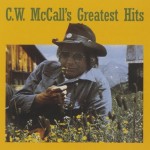
JM: I know this is documented elsewhere, but I think it’s cool that you co-wrote the song “Convoy”. Can you tell us the story behind that song?
CD: I was a jingle writer when I moved to Omaha, and I wrote jingles for an ad agency [Bozell & Jacobs]. The creative director was a guy named Bill Fries. He’s in his 80’s now. Bill was my client, and I was writing stuff. Eventually we did a couple of C.W. McCall records, and they really took off in a big way. Bill ended up leaving the ad agency, we became partners, and started writing songs. The seventh hit that we had was “Convoy”, and of course it was enormous, and sold millions of copies worldwide. It spawned a movie with Kris Kristofferson and Ali MacGraw. It was quite a deal. And actually, a lot of the money I made from McCall is what I was able to fund Mannheim with.
JM: Do you ever regret not continuing in that direction?
CD: Not really. You know, we ran it out to a good point. It’s like a baseball player that plays too long. We didn’t play too long. By the time we left we were at the peak of the thing. Everything was going great. Bill wanted to retire, and I was good with that. And I had enough money to start up Mannheim and build a house, all that good stuff.
JM: What advice would you give to an aspiring musician?
CD: If you really want to do whatever it is, either as a player or a composer or an arranger, if you really want to do it, stick to your guns no matter what people tell you. If they try to talk you out of it, or that there’s no future, you can make a future if you stick to your guns. I would basically say that to anybody entering the music field.
JM: You seem to always have new recordings in the works.
CD: I’m working on an album with my youngest daughter Elyse. We have ten cuts done on it – there’s going to be twelve ultimately. Some of the cuts she was only 14 on, and it’ll blow your mind that she’s that good that young. That album with my youngest daughter is really coming along well. That’s the newest project.
I just finished up weekend concerts with the Universal Studios orchestra, and Elyse came down and sang in those concerts, and then we’re going to Lincoln, Nebraska this afternoon, and she’s going to sing with the band over there. Then we go to Kearney the next day and she sings with the band there, then we come back and do Omaha, and then it’s Christmas.
JM: It seems that music runs in your family, right?
CD: I’m actually a third-generation musician on both sides of my family, so Elyse is fourth. My parents both went to Michigan and graduated in music. My grandmothers on both sides taught music, taught piano. So, yeah, I kind of grew up saturated with it, actually.
JM: I understand that you’ve been involved in research on the use of music for medical purposes. Can you tell us a bit about that?
CD: The deal with that division of my company – it’s called Ambiance Medical – is that I’ve recorded a number of environments with 4-channel sound. My backyard, which is 150 acres of woods – I’ve got microphones out there permanently. They’re all sitting right out there, and those run underground into my studio in the basement of my house. I record the sounds of nature here in the Midwest.
And we’ve taken a rig out and we’ve recorded ocean waves at Haystack Rock out in Oregon, then by Tucson we’ve recorded the sounds of the desert. So I’ve got all of these different environments. Then, once I make a one-hour soundbed out of whichever thing it’s going to be, I go back and write music to it. Sometimes I might take off from a bird that’s singing, I might mimic the melody of the bird and turn it into something. But the music and the sounds are a 50-50 thing. Music is not the overwhelming thing. It’s not like a regular album. It’s like the intermingling of natural sounds.
What I was able to learn at the Boys Town Institute of Hearing here – I’ve got some buddies over there – was that we’re hardwired to hear and recognize certain sounds, and it puts us in certain moods. I accidentally stumbled onto that, and have been using that. I’m at places like the Mayo Clinic, Wake Forest, the Children’s Cancer Research Center. I think I have a total of 95 hospital room in operation now.
You know, I told you that I grew up in that little farm town in Ohio? My grandmother was the piano teacher, but my grandfather was the country doctor. So I was around medicine and music my whole life growing up as a kid.
JM: Is there any chance that you’ll make it to the Santa Barbara show?
CD: No, I’ll be doing shows with my daughter. I’ve got two companies out on the road. I think we’re doing 100 shows between the two touring companies.
JM: You brought up Emerson, Lake & Palmer early on. Do you have a favorite Emerson, Lake & Palmer album?
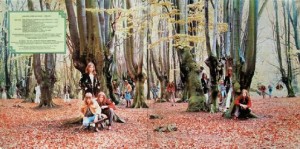
CD: I can see it – it was a gatefold that had a really cool fall picture inside [Trilogy]. And they did an album that had a lot of classical flavor to it, with rock and roll instrumentation.
JM: “Pictures at an Exhibition”?
CD: Yeah, right. “Pictures at an Exhibition”. They were definitely a cool group. I really, really enjoyed them. That was back in the ’70’s. That was an inspiration to me, too.
JM: Mixing classical music with a rock feel – that can be a winning combination.
CD: Well yeah, we’ve been making a living on that pretty darn good. I have a small staff at my label though now. I used to do all my own distribution. I had 75 [employees] at the label, at American Gramaphone, and we’re about 20 [now], except during tour season, and then when we’re at 150 or so with all the extra staff. The core staff is pared down to a small staff which is very efficient. I’d say that the average length that someone has been here so far is at least 25 years. So everybody knows the drill.

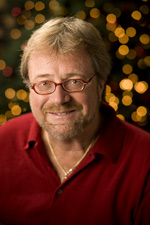
Discussion
No comments for “Interview: Chip Davis”